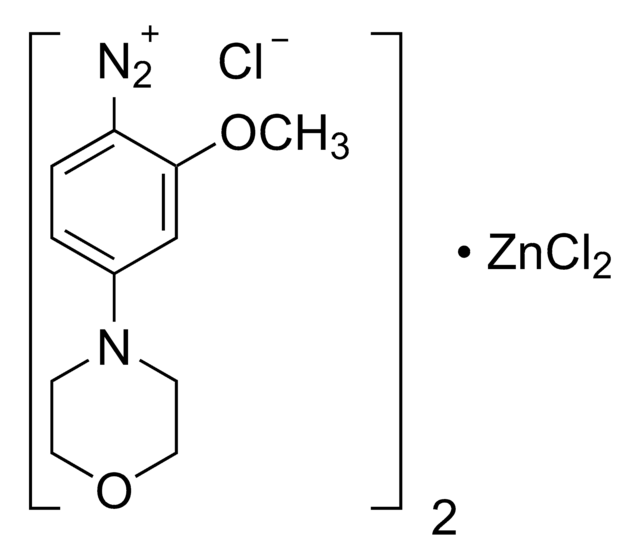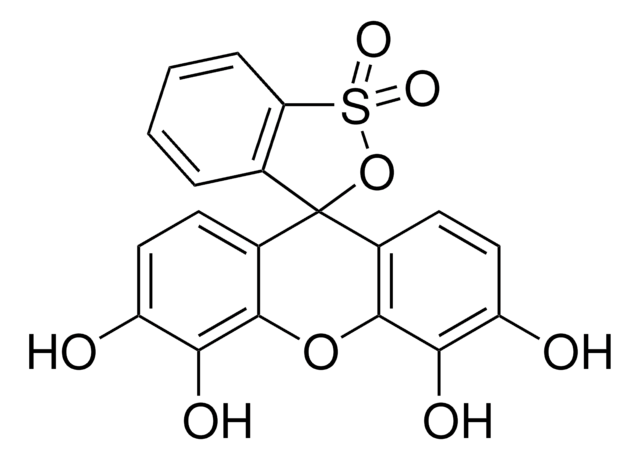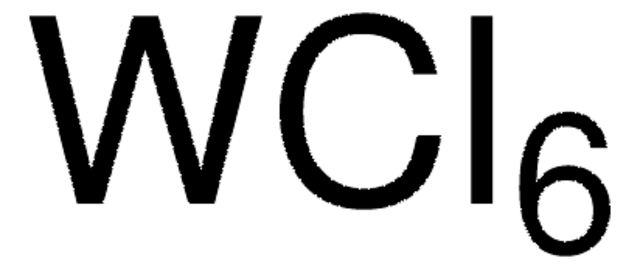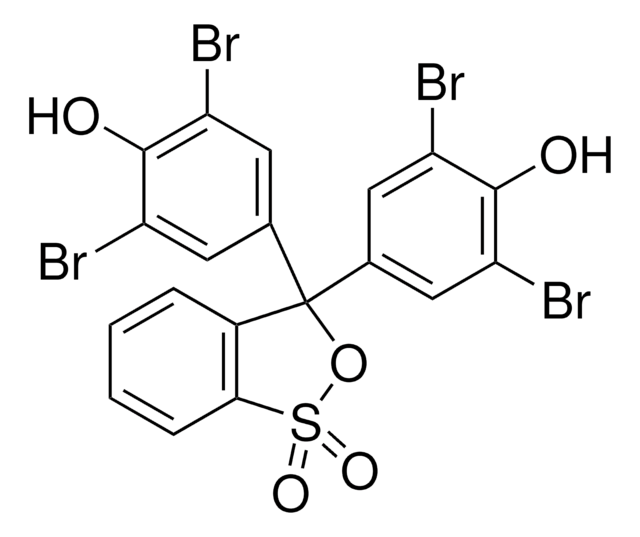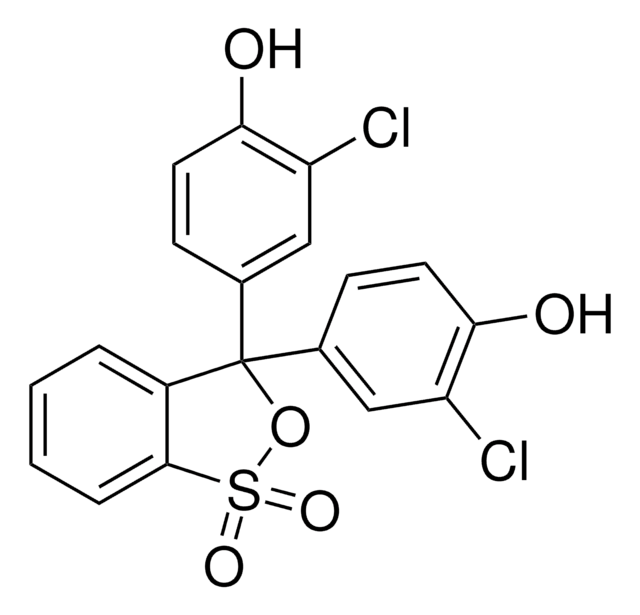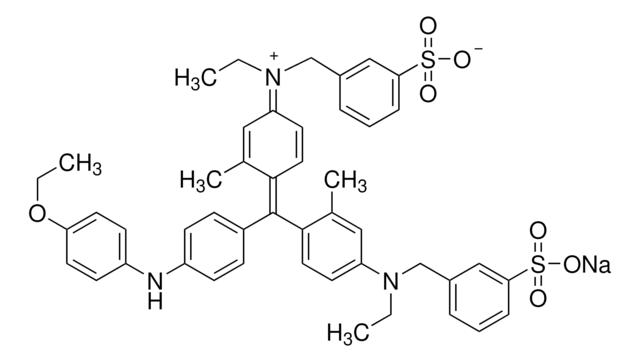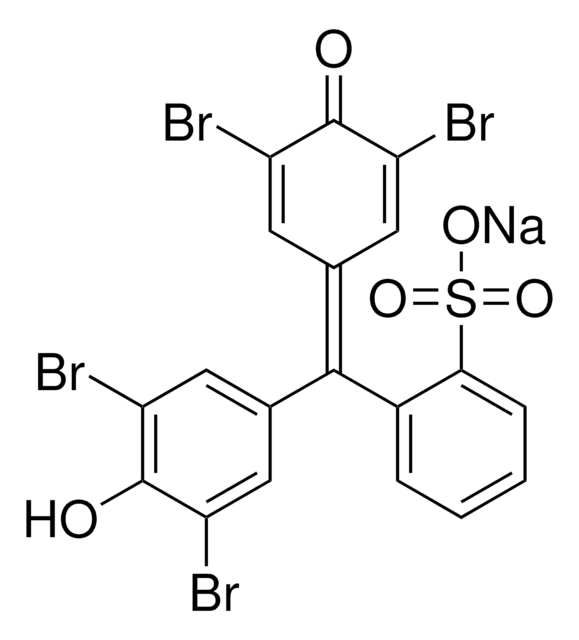199311
Tetrabromophenol Blue
Dye content 75 %
Sinônimo(s):
3,3′,3″,4,5,5′,5″,6-Octabromophenolsulfonphthalein
About This Item
Produtos recomendados
Ensaio
≥75.0% (HPLC)
forma
powder
composição
Dye content, 75%
pf
204 °C (dec.) (lit.)
λmax
388 nm (2nd)
605 nm
ε (coeficiente de extinção)
≥55000 at 606-616 nm in ethanol and water
aplicação(ões)
diagnostic assay manufacturing
hematology
histology
temperatura de armazenamento
room temp
cadeia de caracteres SMILES
Oc1c(Br)cc(cc1Br)C2(OS(=O)(=O)c3c(Br)c(Br)c(Br)c(Br)c23)c4cc(Br)c(O)c(Br)c4
InChI
1S/C19H6Br8O5S/c20-7-1-5(2-8(21)16(7)28)19(6-3-9(22)17(29)10(23)4-6)11-12(24)13(25)14(26)15(27)18(11)33(30,31)32-19/h1-4,28-29H
chave InChI
QPMIVFWZGPTDPN-UHFFFAOYSA-N
Procurando produtos similares? Visita Guia de comparação de produtos
Ações bioquímicas/fisiológicas
Código de classe de armazenamento
11 - Combustible Solids
Classe de risco de água (WGK)
WGK 3
Ponto de fulgor (°F)
Not applicable
Ponto de fulgor (°C)
Not applicable
Equipamento de proteção individual
Eyeshields, Gloves, type N95 (US)
Certificados de análise (COA)
Busque Certificados de análise (COA) digitando o Número do Lote do produto. Os números de lote e remessa podem ser encontrados no rótulo de um produto após a palavra “Lot” ou “Batch”.
Já possui este produto?
Encontre a documentação dos produtos que você adquiriu recentemente na biblioteca de documentos.
Os clientes também visualizaram
Nossa equipe de cientistas tem experiência em todas as áreas de pesquisa, incluindo Life Sciences, ciência de materiais, síntese química, cromatografia, química analítica e muitas outras.
Entre em contato com a assistência técnica


